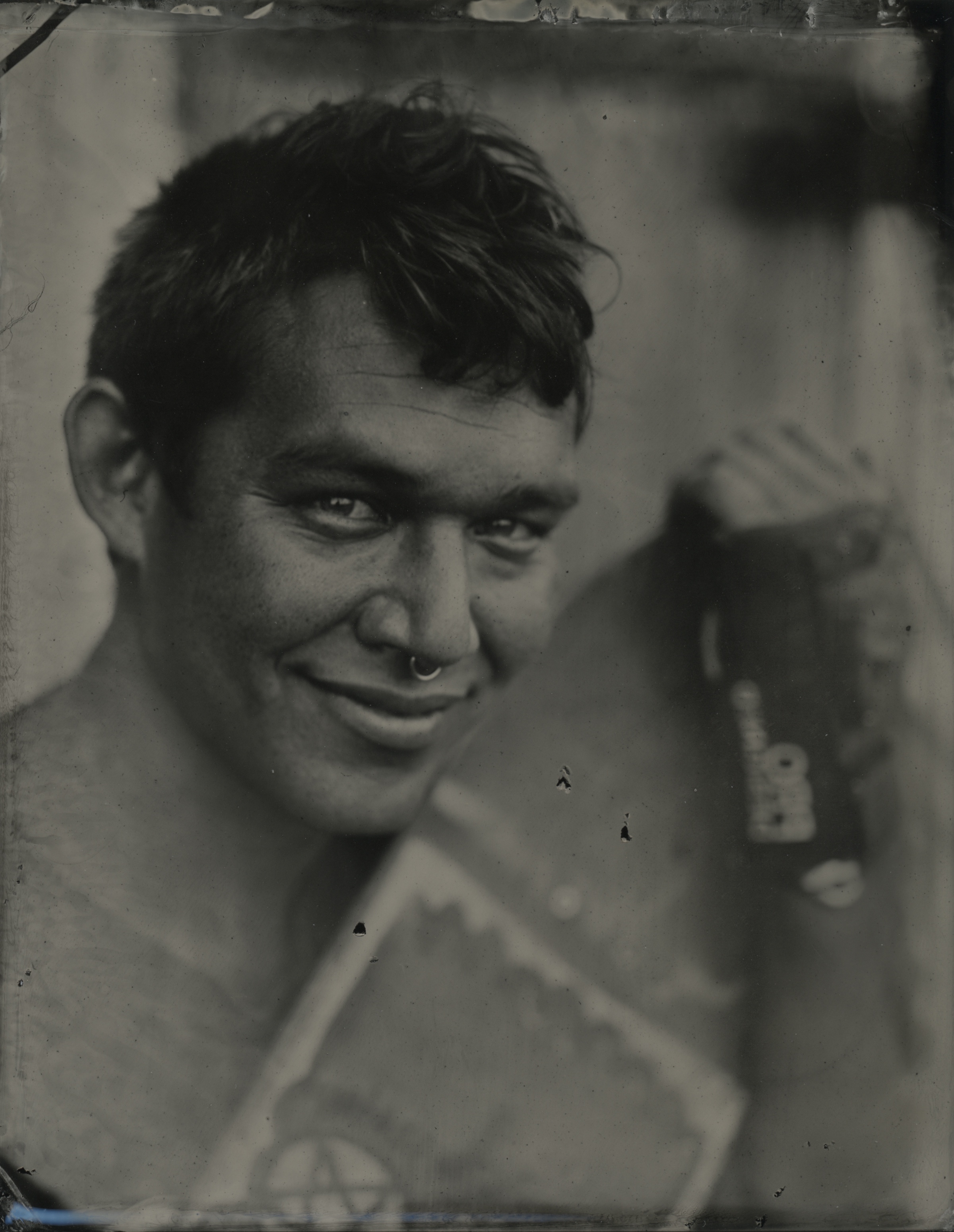Capturing West Coast skaters, the Victorian way
- Text by Biju Belinky
- Photography by Jenny Sampson

Tintype is a century-and-a-half old Victorian photographic process that requires the subject to keep very still for a few seconds – which is why it’s surprising Berkeley-based photographer Jenny Sampson decided to use it to capture skaters for her latest book named after the subculture.
With an intro by pro-skater and writer Bret Anthony Johnston, over 70 portraits capture the intricacies of the skating scene of the West Coast – through seven years of images, multiple states and skateparks, beyond tricks and stereotypes.
“I loved photographing people in more candid ways and I imagined inconspicuously hanging out and photographing –their gestures, postures, interactions,” Sampson tells me. “Skaters attracted me. I always kind of thought of them as rebellious, and I think I wanted to be rebellious as well, but I was afraid to be. I never got up the courage to approach the skaters at that skate park.”
These photographs remained an idea until 2010 when she finished building her own portable darkroom – something which would allow her to develop tintypes on the go. From that moment on, the series started developing (both literally and figuratively). We caught up with her to find out more about the project.

What do you think makes skating such a unique scene?
I think that skating is a powerful equaliser. It’s a club that anyone can belong to. Of course it has been a male-dominated scene for a long time, however, there are so many girls and women skating now. There is a camaraderie that exists at the skateparks, and the seemingly unspoken rules are respected. I’ve observed skateparks that are the ‘home away from home’, where teens congregate every day after school and older folks hang out with them as their mentor. I’ve observed older, experienced skaters literally pick up six-year-olds who have fallen attempting a trick (while said six-year-old’s mother is on her mobile). I’ve observed guys talking and skating together, seemingly old friends, but then learn that they just met.
What are some misconceptions about the scene that you would like to dispel?
This idea that they are troublemakers and rebellious – at least in the sense that being rebellious is a bad thing. Skaters are lawyers, educators, directors of creative writing at upstanding universities, writers, musicians, politicians, students – the list is endless. They are a group of people who are true to themselves, supportive of each other, impressively disciplined and self-driven, empowered and creative.

 How did you pick your subjects for this series?
How did you pick your subjects for this series?
I would ask anyone whose attention I could garner if I could make their portrait. Once someone would agree to sit for me, I felt like I won the lottery. They were willing, patient and often excited about the process since many only knew digital photography. For my portraits, they had to sit for a few minutes in front of my large camera, which is the absolute opposite experience of their style of photographing. Then, as with most people who have never been tintyped before, when they saw their seemingly holographic, silvery faces emerge in the potassium cyanide fixer, they were blown away – and then quickly back to the ramp.
You’ve used tintype for a lot of your projects – what do you like about this particular method?
The wet plate collodion process is magical, and there are many reasons beyond that as to why I love this technique. The tactile and analog qualities of the process; the way it forces me to slow down and immerse myself in the process, engaging with my subjects in a more personal way. The end result is a unique object.

 Skaters by Jenny Sampson is available for pre-order now, via Daylight Books.
Skaters by Jenny Sampson is available for pre-order now, via Daylight Books.
Biju Belinky is Huck’s staff writer. Follow her on Twitter.
Enjoyed this article? Like Huck on Facebook or follow us on Twitter.
Latest on Huck

Plestia Alaqad: “Journalists should focus on humanising people”
Huck’s April interview — Having become one of the most crucial and followed voices from inside Gaza in the aftermath of October 7, the award-winning author and journalist is releasing a new memoir, ‘The Eyes of Gaza’, collating diary entries made over the past 18 months. We caught up with her to hear more about it.
Written by: Isaac Muk

The instrument makers taking DIY music to a whole new level
What does it take to construct a modular synth? How do you turn a block of wood into a double bass? Here, four craftspeople explain why they chose to rip up the rulebooks and build their own music-making machines.
Written by: Daniel Dylan Wray

Southbank Centre reveals new series dedicated to East and Southeast Asian arts
ESEA Encounters — Taking place between 17-20 July, there will be a live concert from YMO’s Haruomi Hosono, as well as discussions around Asian literature, stage productions, and a pop-up Japanese Yokimono summer market.
Written by: Zahra Onsori

In 1971, Pink Narcissus redefined queer eroticism
Camp classic — A new restoration of James Bidgood’s cult film is showing in US theatres this spring. We revisit its boundary pushing aesthetics, as well as its enduring legacy.
Written by: Miss Rosen

As amapiano goes global, where does it leave its roots?
Rainbow grooves — Over the past decade, the house music subgenre has exploded into a worldwide phenomenon. Jak Hutchcraft went to its birthplace of Mamelodi, South Africa, to explore its still-thriving local scene.
Written by: Jak Hutchcraft

Clubbing is good for your health, according to neuroscientists
We Become One — A new documentary explores the positive effects that dance music and shared musical experiences can have on the human brain.
Written by: Zahra Onsori

